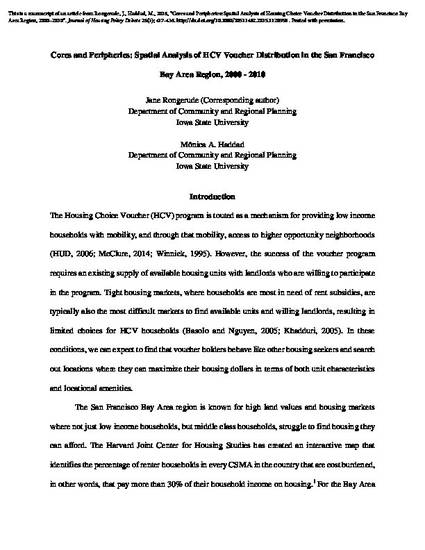
The Housing Choice Voucher (HCV) program is touted as a mechanism for providing low income households with mobility, and through that mobility, access to higher opportunity neighborhoods (HUD, 2006; McClure, 2014; Winnick, 1995). However, the success of the voucher program requires an existing supply of available housing units with landlords who are willing to participate in the program. Tight housing markets, where households are most in need of rent subsidies, are typically also the most difficult markets to find available units and willing landlords, resulting in limited choices for HCV households (Basolo and Nguyen, 2005; Khadduri, 2005). In these conditions, we can expect to find that voucher holders behave like other housing seekers and search out locations where they can maximize their housing dollars in terms of both unit characteristics and locational amenities.
Available at: http://works.bepress.com/monica-haddad/7/

This is a manuscript of an article from Rongerude, J., Haddad, M., 2016, “Cores and Peripheries: Spatial Analysis of Housing Choice Voucher Distribution in the San Francisco Bay Area Region, 2000–2010”. Journal of Housing Policy Debate 26(3); 417-436. DOI; 10.1080/10511482.2015.1128958 . Posted with permission.